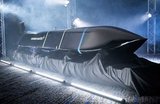USAF orders more LAIRCM systems
Crucial to keeping aircrews safe, LAIRCM automatically detects emerging missile threats and uses a high-intensity, laser-based countermeasure system to track and defeat missiles. (Photo: Northrop Grumman)
Northrop Grumman has received an order for further installations of its Large Aircraft Infrared Countermeasure (LAIRCM) systems on US and international fixed-wing and rotary-wing aircraft.
The contract is valued at $146 million and was placed by the USAF.
The award is part of an existing indefinite-delivery, indefinite-quantity contract for LAIRCM upgrades, modifications and installations on a wide range of aircraft, including the C-17, C-5, C-130J, P-8, CH-53K, KC-46 and other platforms operated by international customers.
Northrop Grumman’s family of countermeasure systems are installed on more than 1,500 aircraft of 85 different types.
The LAIRCM system for the USAF combines an advanced IR missile warning system and directed laser countermeasures.
The systems provide spherical protection by detecting, tracking and jamming incoming infrared threats.
It defeats threats by directing a high-intensity laser beam into the eye of the fast-moving missile’s infrared seeker.
More from Air Warfare
-
![Singapore’s Hermes 900 buy to enhance multi-domain ISR capabilities]()
Singapore’s Hermes 900 buy to enhance multi-domain ISR capabilities
Drawing on its endurance and substantial payload capacity, the Hermes 900 would provide a boost to Singapore’s ISR capabilities, particularly in the maritime domain.
-
![Dubai Airshow 2025: GA-ASI’s MQ-9B racks up new milestones with AEW demo planned]()
Dubai Airshow 2025: GA-ASI’s MQ-9B racks up new milestones with AEW demo planned
The company announced its demonstration timeline while confirming the MQ-9B had completed the platform’s third lifetime test.
-
![India reopens hunt for reconnaissance and surveillance helicopters]()
India reopens hunt for reconnaissance and surveillance helicopters
The extended deadline for vendors highlights the complexity of the procurement for India, with numerous vendors positioning themselves for the programme.
-
![European firms express interest in filling NATO airborne early warning replacement needs]()
European firms express interest in filling NATO airborne early warning replacement needs
The comments from both Saab and Airbus on their potential to fulfil the airborne early warning and control requirement come after NATO countries shelved plans to procure six E-7 Wedgetail AEW&C aircraft.























